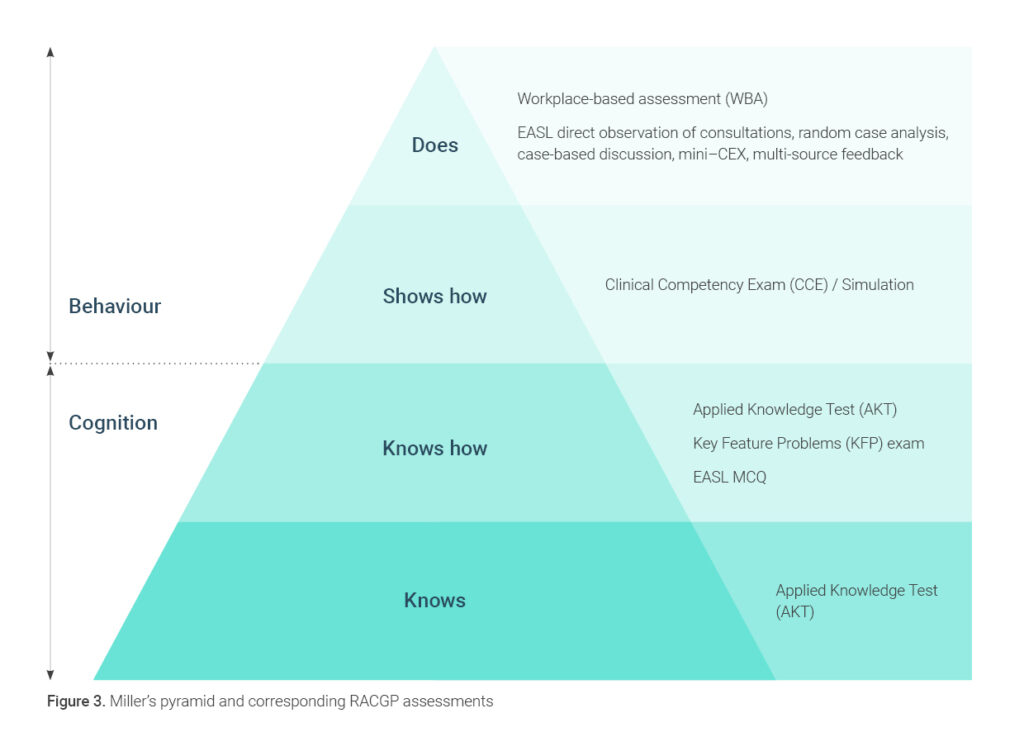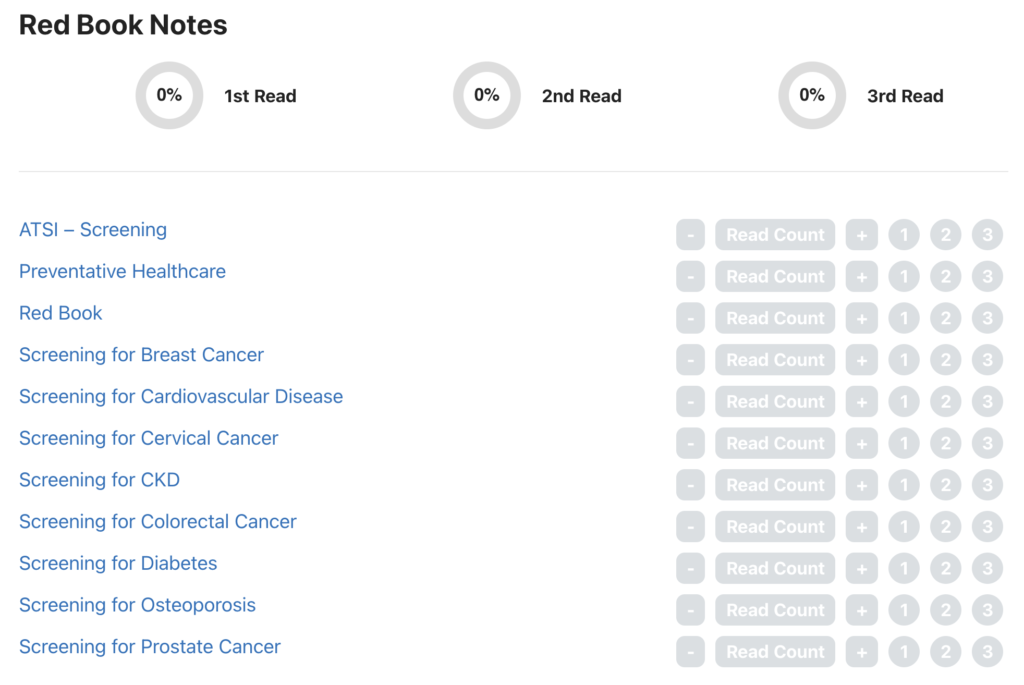Understanding the Ebbinghaus Forgetting Curve is a key to time-efficient learning and will facilitate your passing of the RACGP AKT KFP, and CCE Exams.
Back in the 1980s, when I was a medical student, I did not give much thought to how I learned stuff. I just did. Some 40 years later, when it came to sitting my RACGP exams, I found my neuroplasticity less than it once was. Remembering long-forgotten factoids and information the RACGP expects you to rote learn—information that I simply look up in routine clinical practice—dictated an efficient approach more suited to my somewhat ageing neural network.
Ebbinghaus Forgetting Curve
The Ebbinghaus Forgetting Curve illustrates the decline of memory retention over time. It was developed by German psychologist Hermann Ebbinghaus in the late 19th century. Ebbinghaus’s experiments involved learning lists of nonsensical syllables and measuring how much he could recall after varying time intervals. The key findings of his research are as follows:
- Initial Rapid Decline:
- Memory retention drops steeply shortly after learning, with a significant amount of information forgotten within the first few hours.
- Slowing Decline:
- After the initial rapid drop, the rate of forgetting slows down, leading to a more gradual decline in memory over time.
- Retention over Time:
- A small amount of information is retained for longer periods, indicating that some memories are more resilient to forgetting.
Implications for Learning:
- Spaced Repetition:
- Spacing out learning sessions over time (rather than cramming) can help combat the rapid initial decline and improve long-term retention.
- Review and Reinforcement:
- Regular review of material can help consolidate memories and slow the forgetting process.

Spaced Repetition in Action:
- TV Advertising:
- Sit back and consider TV advertising and how it is done. First, you get the long version of the advertisement, and then you see it again, usually within the same show (< 1 hour). Next, you see it either repeated in full or in a partial version in the following hours and days. This is spaced repetition in action. It’s done because it works.
- Flashcards:
- Flashcards are a common version of spaced repetition, and you will find some sets here for topics you need instant recall on.
Other Learning Models
1. Bloom’s Taxonomy of Learning Domains
Developed by Benjamin Bloom and colleagues, Bloom’s Taxonomy is a hierarchical model that classifies educational learning objectives into levels of complexity and specificity. It consists of three domains:
- Cognitive Domain (Knowledge):
- Remembering: Recall facts and basic concepts (e.g., definitions, lists).
- Understanding: Explain ideas or concepts (e.g., summarize, classify).
- Applying: Use information in new situations (e.g., solve problems, demonstrate).
- Analyzing: Draw connections among ideas (e.g., compare, contrast, differentiate).
- Evaluating: Justify a stand or decision (e.g., argue, validate).
- Creating: Produce new or original work (e.g., design, construct, formulate).
- Affective Domain (Attitude):
- Involves emotions, attitudes, and values, progressing from receiving information to internalizing values.
- Psychomotor Domain (Skills):
- Involves physical skills, from basic movements to complex actions.
2. Constructivist Learning Theory
Constructivism posits that learners actively construct their own understanding and knowledge of the world through experiences and reflecting on those experiences. Key principles include:
- Active Learning:
- Learners are active participants in their learning process.
- Prior Knowledge:
- Learning builds on what learners already know.
- Real-World Context:
- Learning is more effective when it is contextualized in real-world scenarios.
- Social Interaction:
- Collaboration and discussion with others enhance learning.
3. Kolb’s Experiential Learning Model
David Kolb’s model emphasizes learning through experience and identifies four stages in a cyclical process:
- Concrete Experience:
- Engaging in a new experience or situation.
- Reflective Observation:
- Reflecting on the experience.
- Abstract Conceptualization:
- Forming theories or generalizations based on reflections.
- Active Experimentation:
- Applying the theories to new situations.
4. Vygotsky’s Social Development Theory
Lev Vygotsky’s theory focuses on the importance of social interaction and cultural context in learning. Key concepts include:
- Zone of Proximal Development (ZPD):
- The gap between what a learner can do independently and what they can achieve with guidance and support.
- Scaffolding:
- Providing support to learners as they develop new skills, gradually removing the support as they become more competent.
5. Miller’s Pyramid of Clinical Competence
Developed by George Miller, this model is used primarily in medical education to assess clinical competence. It consists of four levels:
- Knows:
- Knowledge of facts and principles.
- Knows How:
- Application of knowledge to solve problems.
- Shows How:
- Demonstration of skills in a controlled setting.
- Does:
- Performance in real clinical practice.

Closing Thoughts
Understanding and applying different learning models can improve memory retention. The Ebbinghaus Forgetting Curve emphasizes the importance of regular review and spaced repetition, while other models like Bloom’s Taxonomy, constructivist theories, and Kolb’s experiential learning provide frameworks for developing comprehensive and effective learning strategies.
This website contains a range of tools to facilitate your learning.
Simplify Button
The simplify button converts the notes into just the dot-point headings. This lets you skim a topic rapidly, then go back and read it in full detail. You have now performed some spaced repetition in a lot less time than reading the whole text twice. It’s also handy for last-minute revision.
Page Read Counter
For members, we know who you are, so, we can convert this:

Into something far more useful for tracking your progress:

Each time you open a page the read count goes up. You can mark a page “less read” with the [-] button or “more read” with the [+] button. This lets you see, at a glance, where you are on that particular subject.
Flashcards
A classic example of spaced repetition is flashcards. Here is a set that covers the systems review you need to know to extract the missing history from the role player in RACGP CCE Clinical Encounters:
